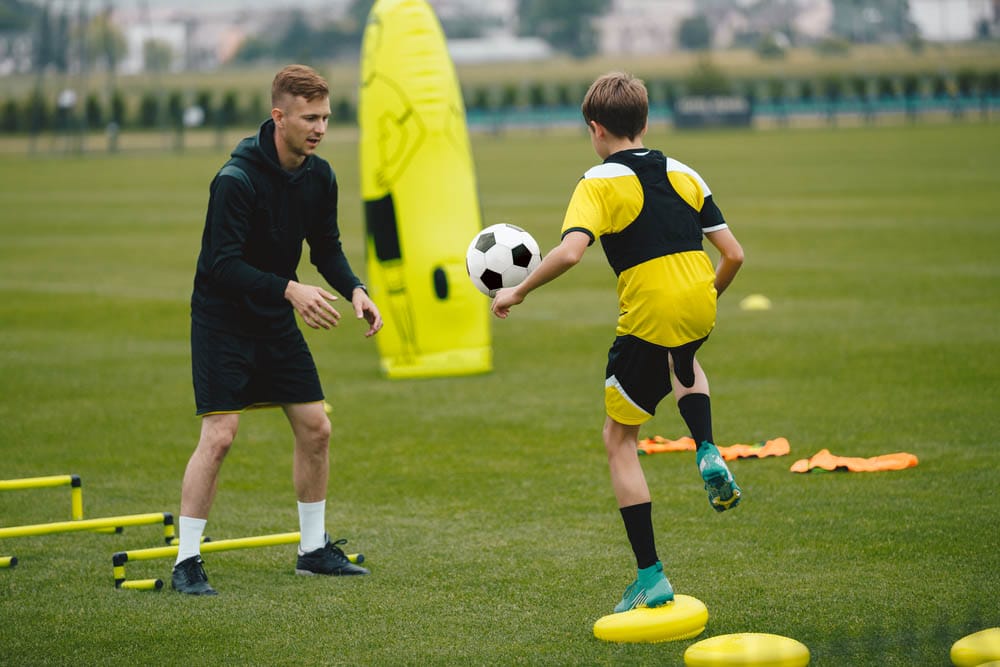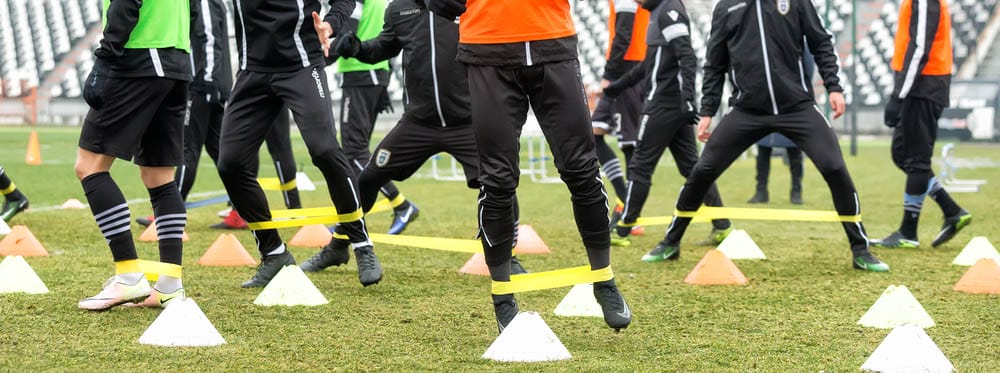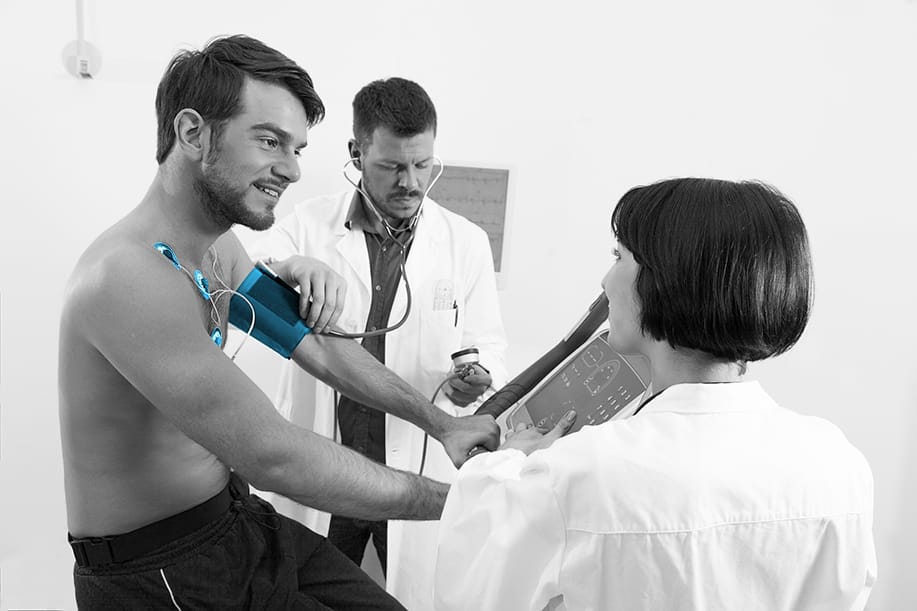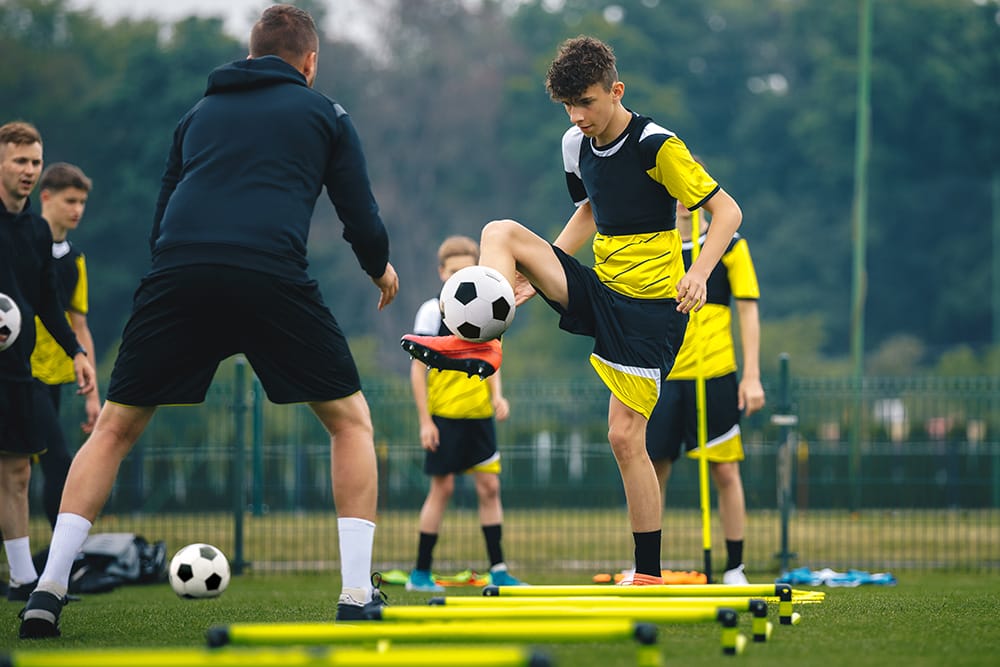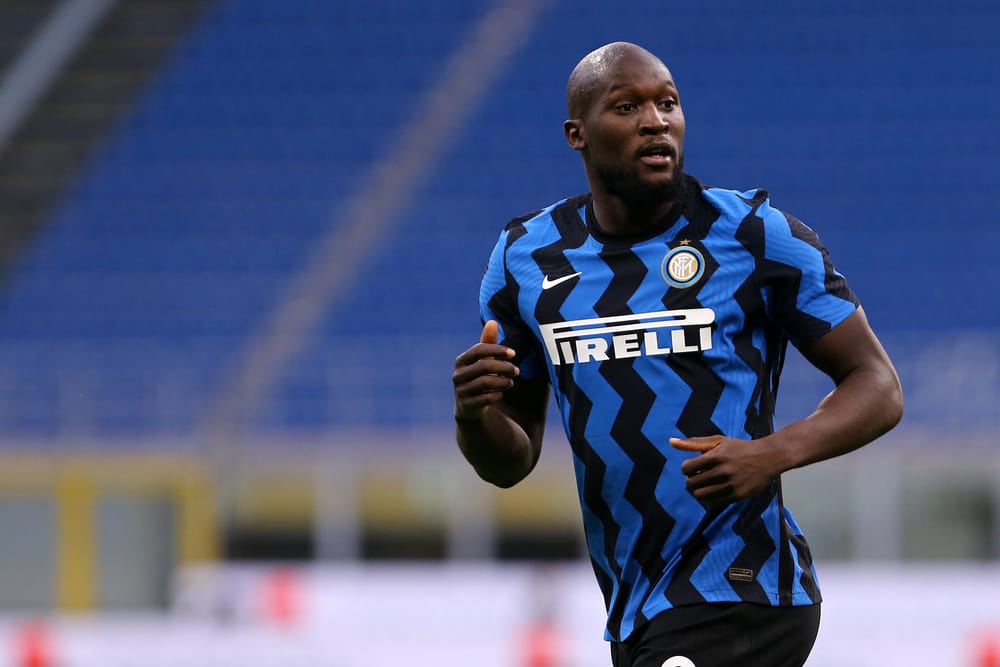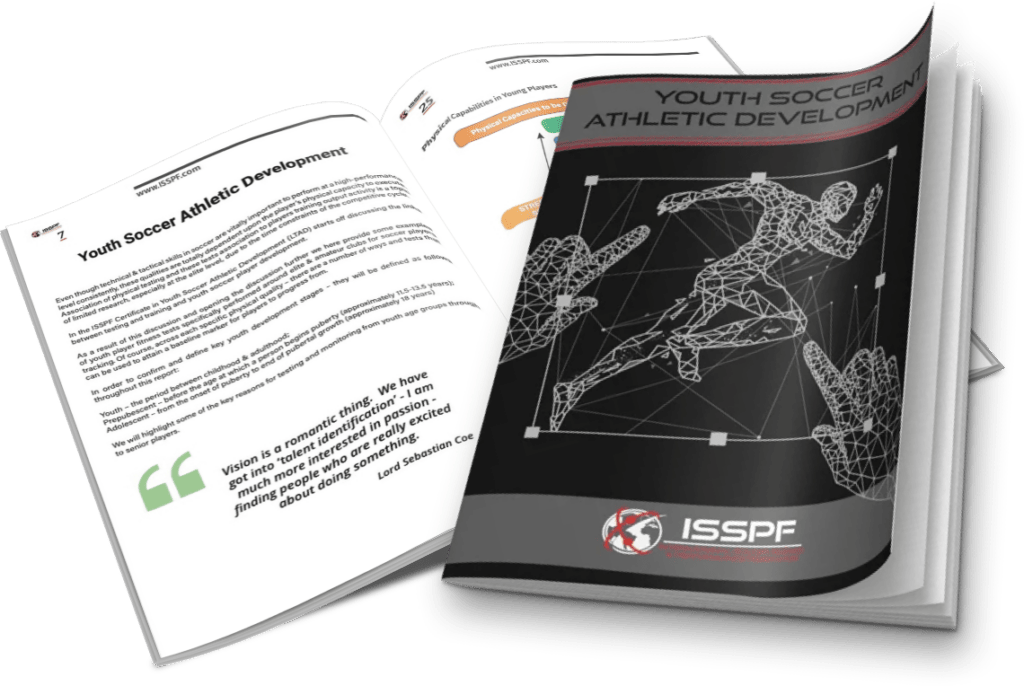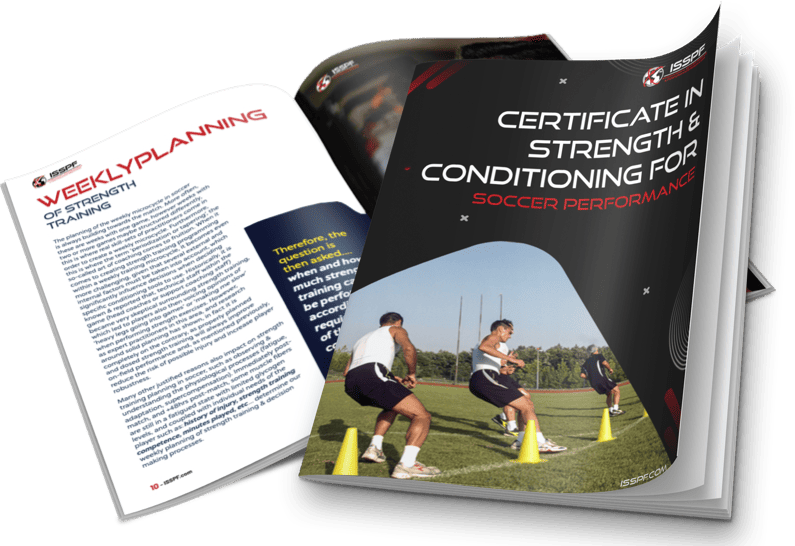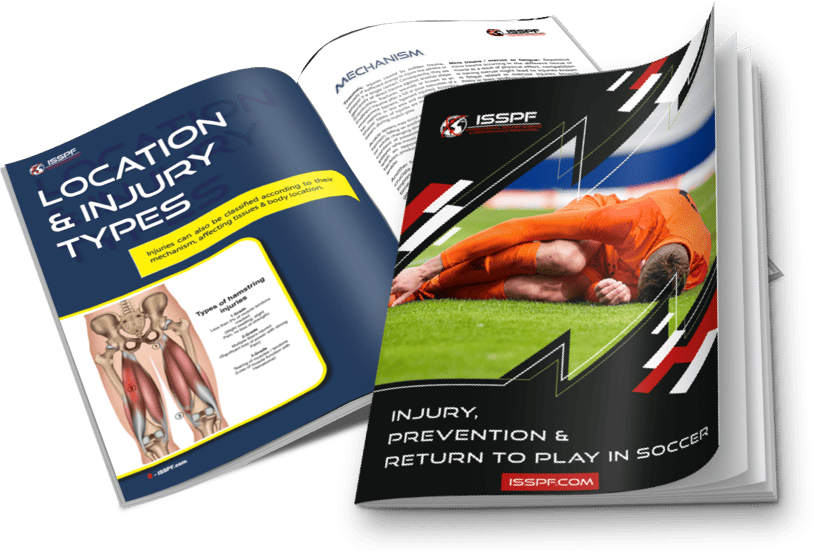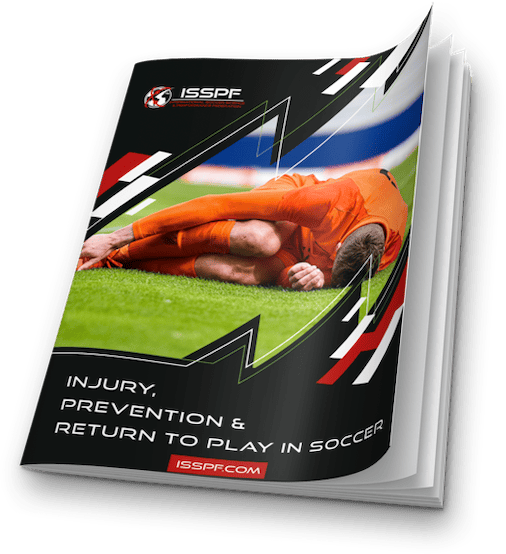Written By: David Hartley MSc BASRaT-reg CSCS (Rehabilitation Coach)
Injuries have a profound impact on the performance of football teams, and the availability of players for selection plays a crucial role in a team’s success (Hagglund et al., 2013).
Whenever injuries occur, the pressure mounts on players and the team to facilitate a speedy return-to-play (RTP). However, this urgency can come with a trade-off, as a hurried RTP often leads to a significantly higher risk of injury recurrence (Orchard and Best, 2002).
The core objective of the rehabilitation process is twofold: first, to restore the structural integrity of injured tissues, and second, to capitalize on the opportunity to enhance overall athleticism, thereby improving physical performance and minimizing the likelihood of recurrent or subsequent injuries.
Traditionally, the timeframes for RTP were predominantly based on the physiological healing processes of the injured tissues. Nevertheless, modern approaches have shifted towards adopting a criteria-based methodology, incorporating both objective and qualitative markers to determine the appropriate timing for RTP (English, 2013).
This evolution allows for a more comprehensive and tailored rehabilitation program, with a greater focus on the individual needs of the player. During the rehabilitation process, players often undertake gym-based conditioning programs.
These programs are designed to stimulate tissue repair and cultivate physical capacity, ensuring that they can withstand the heightened physical demands encountered during the end-stage of rehabilitation. By strategically blending structural recovery with physical development, the players can attain a more robust and sustainable level of performance.
FREE GUIDE: INJURY PREVENTION & RETURN TO PLAY
Click the button below to download a comprehensive guidebook covering the common injuries in soccer, how to minimize them, and safe techniques for swiftly returning injured players back to full match fitness.
DOWNLOAD
FREE!
This article seeks to delve into theoretical models that can effectively guide end-stage field-based rehabilitation. Such models provide invaluable insights into crafting rehabilitation protocols, ensuring that players can return to the field safely and within an appropriate time frame.
Consequently, these models consider various factors, including the expertise and contributions of a multidisciplinary team, which is essential in facilitating a seamless and successful recovery process. The collaboration of medical professionals, physiotherapists, coaches, and trainers is vital in orchestrating a holistic rehabilitation plan.
Each member of the multidisciplinary team brings unique expertise and perspectives to the table, leading to a well-rounded approach that addresses not only the physical aspects but also the mental and emotional well-being of the player.
Field-based rehabilitation further emphasizes the importance of mimicking real-game scenarios to acclimate players to the challenges they will face upon their return.
Gradual and progressive exposure to field-specific activities ensures that players can confidently and competently perform once they re-join their teammates in competitive matches.
Programming
The control-chaos continuum (Taberner et al., 2019) is a framework for structuring field-based rehabilitation, with the aim of progressing external load exposure and cognitive challenges of rehabilitation tasks concurrently. The concept involves introducing predictable running tasks in a controlled manner, gradually progressing the volume of running and increasing speed exposure.
Eccentric forces can be increased through the introduction of multidirectional movement, which can be progressed by increasing the sharpness of turns and the speed in which players are required to turn.
During training and match play, players must react to the actions of team-mates, opponents and the ball, which adds an extra dimension to the physical and technical demands placed upon them.
This can be addressed by designing drills that require players to react to a stimulus, such as verbal commands or the action of another player (Allen et al, 2021). Sport-specific drills can also be incorporated at this stage, and drills utilising a football can help maintain technical skills.
The chaotic nature of football is impossible to completely replicate during rehabilitation and it is essential that practitioners develop close working relationships with coaches (Ekstrand et al., 2019), which can provide opportunities for their input to address any technical or tactical deficiencies that have been identified, and to incorporate a phased return-to-training (RTT) whereby the coaches involve players in certain aspects of training to allow a period of adaptation to full training.
Whilst the control-chaos continuum provides a framework for progressing the volume, intensity and complexity of rehabilitation drills, certain tasks will have variable physical demands on different tissues.
As a crude example multidirectional movement is likely to be more demanding than linear running for an ankle syndesmosis injury (Morgan et al., 2014), but running in a straight line will be more demanding for a bone stress injury as the injured tissue is loaded through one plane of movement (Mittag et al., 2018).
The starting point of field-based rehabilitation, therefore, is likely to vary depending on the involved tissues and the structure of a field-based rehabilitation programme should be determined on a case-by-case basis, and a deep understanding of pathophysiology of different tissues is essential to ensure that end-stage rehabilitation progresses from the least physically demanding tasks to the most, whilst increasing the complexity of the cognitive challenges as physical capacity improves.
Monitoring
The advent of technology such as GPS has undoubtedly revolutionized the way we understand and assess the external loads that players experience during training and match play. This advancement has provided an invaluable insight into the physical demands placed on athletes, allowing for a more informed and data-driven approach to end-stage rehabilitation.
By establishing a benchmark for players to meet during their rehabilitation, GPS metrics ensure that athletes have the necessary capacity to cope with the rigorous demands of training and competition. This progressive increase in load is crucial in avoiding sudden spikes in workload, which have been known to escalate the risk of injury (Bowen et al., 2020).
While these GPS metrics provide essential quantitative data, they may inadvertently overshadow other equally critical factors that are more challenging to quantify objectively. One such critical factor is movement competency, which has been well-documented to suffer following an injury (Chang et al., 2018). Suboptimal execution of functional tasks can significantly increase the risk of subsequent injuries, making it imperative to address movement quality during end-stage rehabilitation (McBurnie et al., 2022).
The evaluation of movement competency should not merely focus on the quantity of movement but also emphasize its quality. Nonetheless, this task can be daunting due to the complexity of many sporting movements and the vast variability in movement strategies employed by athletes.
While some GPS units have taken strides in identifying compensatory movements, such as favouring one side over the other during running gait, the reliability of this feature remains uncertain.
Therefore, it is crucial to adopt a comprehensive and multidisciplinary approach in assessing an athlete’s readiness for RTP. Objective markers, such as GPS data, should be interpreted in conjunction with qualitative markers that evaluate movement quality.
This collaborative decision-making process should involve the expertise of medical professionals, sports scientists, coaching staff, and most importantly, the input of the athlete.
Conclusion
End-stage rehabilitation is a pivotal phase in an athlete’s journey back to full play, and its success hinges upon the adoption of an individualized and comprehensive approach.
Recognizing that each player’s injury, pathology, and unique positional demands vary, it is imperative to tailor the rehabilitation program to meet their specific needs. Furthermore, considering the club’s playing style adds another layer of complexity, as the athlete must regain their fitness and skill set in alignment with the team’s tactics and strategies.
To achieve the best possible outcomes, a collaborative effort is vital during end-stage rehabilitation.
This involves a close partnership between medical experts, physical performance specialists, and coaching staff. This multidisciplinary approach ensures that all aspects of the player’s recovery and readiness for play are thoroughly evaluated, and appropriate interventions are implemented.
A valuable framework in structuring and advancing rehabilitation tasks is the control-chaos continuum. This concept provides a valuable guide in gradually exposing the athlete to increasingly unpredictable and dynamic situations, mirroring the real-life chaotic environment of competitive sports.
However, it is crucial to emphasize that this continuum should not be followed rigidly or in a prescriptive manner. Instead, practitioners should embrace their creativity and clinical reasoning to design drills and exercises that are tailored to each player’s unique situation and stage of recovery.
By employing creativity in designing rehabilitation drills, practitioners can effectively challenge the athlete at an appropriate level, fostering continual growth and improvement. This approach helps to strike the delicate balance between pushing the player to reach their potential while safeguarding them from undue risks during this critical phase of rehabilitation.
Moreover, the control-chaos continuum provides a flexible framework that can be adapted to accommodate individual progress and setbacks. Each player’s journey towards full recovery is distinct, and the rehabilitation program must be responsive to their changing needs and capabilities.
In summary, end-stage rehabilitation necessitates a personalized and inclusive approach that factors in the player’s specific injury, positional demands, and the club’s playing style.
Collaboration between medical, physical performance, and coaching staff is essential to ensure a safe return to play, where the player can thrive amidst the unpredictability of competitive sports.
Embracing the control-chaos continuum as a guide, while allowing room for creativity and clinical reasoning, empowers practitioners to tailor rehabilitation tasks effectively, ultimately leading to successful player outcomes and optimized performance on the field.
What Now?
The demand for sports science, physiotherapists, performance & coaching specialists in football & team sports is growing year upon year. Thousands of students are leaving university with a sport science degree, physio or therapy related qualification, however many of them asking the key question – What now?
- How do I get a job in football?
- What’s the next step?
- Which area of sport or football science & medicine do I want to specialise in?
- How can I take my learning to the next level?
These are certainly interesting questions as progressing from completing a sporting, medical or therapy related degree to then working in professional football & trying to understanding all the key components, and soft skills that come with jobs in football or careers within sport is complex.
As a result, the bespoke courses developed by ISSPF Medical & Football Science Faculty members are a way of further exposing learners, parents, professional coaches, students, or other individuals interested in football science with a thirst to develop & upskill further.
The link below will take you to the hugely popular & expertly designed ISSPF endorsed & accredited Soccer Injury, Prevention & Return to Play online sport science course, where you will be exposed to football medicine & coaching science led research, with practical examples used by the game’s leading practitioners.
Why Is This Course Important?
- Provides up to date injury analysis, injury reduction processes & modern approaches & insights to individuals tasked with the injury, rehabilitation & return to play process of athletes or team sport players.
- Discusses the most efficient training methods and detailed insights into developing player fitness alongside rehabilitation & training methodologies.
- Gain a better understanding how to maximise the rehabilitation process within the game.
- Learn from industry experts in the area of rehabilitation & return to play protocols.
- Help maximise your decision making through a better understanding & appreciation of football or soccer rehabilitation.
Who Is This Course For?
- Individuals tasked with the responsibility for management of players from a training, preparation, coaching & rehabilitation perspective
- Any individual who is working as part of a multi-disciplinary staffing structure within a team or individual sport
Certificate in Soccer Injury Prevention Return to Play Course
Elevate Your Football Career with Cutting-Edge Sports Science Courses
The world of football and team sports is witnessing an ever-increasing demand for skilled sports scientists, physiotherapists, performance specialists, and coaching experts. However, many graduates with degrees in sports science, physiotherapy, or related fields often find themselves pondering the crucial question – “What now?”
How can they secure a job in football? What should be their next step? Which area of sports or football science should they specialize in? How can they take their learning to new heights?
Unlocking Opportunities with ISSPF Medical & Football Science Faculty: Addressing these intriguing questions and assisting aspiring professionals in the world of football, ISSPF (International Society of Sports and Football Professionals) presents bespoke courses designed by its Medical & Football Science Faculty members.
These courses aim to expose learners, parents, professional coaches, students, and football enthusiasts to the latest developments in football science, helping them upskill and further their careers.
Explore the Highly Acclaimed Soccer Injury, Prevention & Return to Play Course: One such widely popular and expertly crafted course endorsed and accredited by ISSPF is the Soccer Injury, Prevention & Return to Play online sport science course.
This course offers a comprehensive insight into football medicine and coaching science, showcasing research and practical examples employed by the industry’s leading practitioners.
Why Is This Course a Game-Changer?
- Up-to-Date Injury Analysis: Learn about the latest injury analysis techniques, injury reduction processes, and modern approaches to managing athletes’ recovery and return to play.
- Optimal Training Methods: Gain detailed insights into developing player fitness while balancing rehabilitation and training methodologies for enhanced performance.
- Maximizing Rehabilitation Processes: Acquire essential knowledge on maximizing the rehabilitation process within the game, ensuring athletes return to the field stronger than before.
- Learn from Industry Experts: Benefit from the wisdom of industry experts in the field of rehabilitation and return-to-play protocols, gaining from their wealth of experience.
- Enhancing Decision-Making: Develop a better understanding and appreciation of football or soccer rehabilitation, empowering you to make informed decisions.
Who Should Enrol in this Course?
- Player Management Professionals: Individuals responsible for managing players from a training, preparation, coaching, and rehabilitation perspective will find immense value in this course.
- Multi-Disciplinary Team Members: Professionals working as part of a multi-disciplinary staff structure within team or individual sports will discover practical applications for their roles.
As the sports industry continues to evolve, staying ahead of the curve with specialized knowledge is crucial for anyone aspiring to make their mark in football or team sports. ISSPF’s cutting-edge courses open doors to new opportunities and empower sports science enthusiasts to excel in their careers.
Whether you’re a coach, a physiotherapist, or a sports science graduate, embracing continuous learning through these courses will undoubtedly enhance your prospects in the thrilling world of football. So, take the first step towards a successful career by enrolling in the Soccer Injury, Prevention & Return to Play course today!
Interested in elevating your football career? www.ISSPF.com/courses Don’t miss out on this golden opportunity! Click the link below to enroll in the highly acclaimed Soccer Injury, Prevention & Return to Play course now and take your skills to the next level.
Certificate in Soccer Injury Prevention Return to Play Course
Injury Prevention & Return to Play Course:
Module 1: Injury analysis in soccer
Lecturer: Dr. Hilary Obert (Major League Soccer [MLS Cup] Champion)
Module 2: How to implement injury prevention programs within soccer
Lecturer: Dr. Victor Salinas (Former Liverpool FC Physio)
Module 3: Understanding injury prevention and rehabilitation in soccer
Lecturer: Dr. Juan Carlos Ramos (Boca Juniors Medical Department)
Module 4: Injury reduction strategies in professional soccer
Lecturer: Dr. Patrick Orme (Bristol City FC, Head of Physical Performance)
Module 5: Screening processing in soccer & corrective implementation
Lecturer: Dr. Hilary Obert (Major League Soccer [MLS Cup] Champion)
Module 6: Nutrition for Injury Phases & Rehabilitation
Lecturer: Faisal Alshawa MSc
Module 7: Injury Prevention in Soccer: Key Strategies & Methods
Lecturer: Aleksa Boskovic MSc
Module 8: Psychology during soccer injury
Lecturer: Dr. Jorge David More Anzola (Millionares FC, Colombia)
Module 9: Soccer specific movement preparation: Improving efficiency
Lecturer: Aleksa Boskovic MSc
Module 10: Training Load Management: Performance Optimisation
Lecturer: Dr. Adam Owen
Module 11: ACL Injury Criteria Based Return to Play in Soccer
Lecturer: Dr. Felix Fischer
Module 12: Preparing the Injured player for return to play (RTP)
Lecturer: Matt Newton MSc (KitMan Labs, Former Cardiff City FC)
References (click + to expand)
References
Allen T, Wilson S, Cohen DD, Taberner M. Drill design using the’ control-chaos continuum’: Blending science and art during return to sport following knee injury in elite football. Physical Therapy in Sport 2021;50: 22-35
Bowen L, Gross AS, Gimpel M, Bruce-Low S, Li, F-X. Spikes in acute:chronic workload ration (ACWR) associated with a 5-7 times greater injury rate in English Premier League football players: a comprehensive 3-year study. British Journal of Sprts Medicine 2020;54: 731-738
Chang W-J, O’Connell NE, Beckenkamp PR, Alhassani G, Liston MB, Schabrun SM. Altered primary motor cortex structure, organization, and function in chronic pain: a systematic review and meta-analysis. Journal of Pain 2018; 19(4): 341-359
Ekstrand J, Lundqvist D, Davison, M, D’Hooghe M, Pensgaard AM. Communication between the medical team and the head coach / manager is associated with injury burden and player availability in elite football clubs. British Journal of Sports Medicine 2019;53: 304-308
English B. Phases of rehabilitation. Foot Ankle Clin 2013;1 8: 357-367
Hagglund M, Walden M, Mugnusson H, Kristenson K, Bengtsson H, Ekstrand J. Injuries affect team performance negatively in professional football: an 11-year follow-up of the UEFA Champions League injury study. British Journal of Sports Medicine 2013; 47: 738-742
Mittag U, Kriechbaumer A, Rittweger J. Torsion – an underestimated form shaping entity in bone adaptation? Journal of Musculoskeletal and Neuronal Interactions 2018: 18(4): 407-418
Morgan C, Konopinksi M, Dunn AJ. Conservative management of syndesmosis injuries in football: an injury on the increase or an increase in recognition? Aspetar Sports Medicine Journal 2014;3(3): 602-613
McBurnie AJ, Harper DJ, Jones PA, Dos’Santos T. Deceleration training in team sports: Another potential ‘vaccine’ for sports-related injury? Sports Medicine 2022;52: 1-12
Orchard J, Best TM. The management of muscle strain injuries: early return versus the risk of recurrence. Clinical Journal of Sport Medicine 2002;12(1): 3-5
Taberner M, Allen T, Cohen DD. Progressing rehabilitation after injury: consider the ‘control-chaos continuum’. British Journal of Sports Medicine 2019;53:1152-1136
Share this article:


